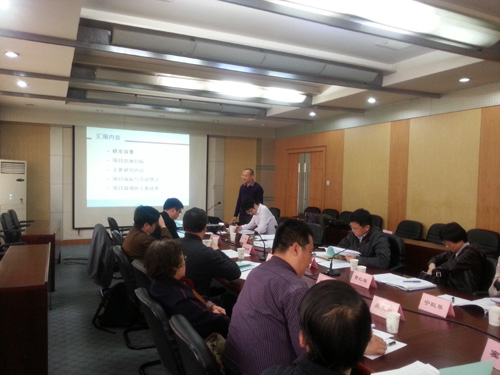- Home >> News >> Research Progress
The Project “ Energy-saving Window Coating’s Preparation and Application Demonstration” Successfully passed Acceptance Inspection
On April 16, 2013, Bureau of High-tech Research and Development, CAS organized an acceptance inspection meeting on the key innovation project “Energy-saving Window Coating’s Preparation and Application Demonstration” which has been co-undertaken by Guangzhou Institute of Energy Conversion, CAS and Shanghai Institute of Ceramics, CAS.
After hearing the work reports and reviewing relevant materials, the inspection team fully acknowledged the accomplishments that have been achieved, and especially highly praised the facility R&D and production line construction during product’s industrialization. Thus, the expert team unanimously approved successful acceptance of the project, and also raised constructive suggestions in talent nurturing, product diversity& weathering resistance, and cost control. It is hoped that the research products can be mass produced and widely used as soon as possible.
The project’s achievements are as follows: realizing thermochromic thin film’s low-temperature deposition through scientific design of coating structure; dramatically raising visible light transmission ratio and solar energy regulation ratio; successfully preparing 6 kinds of thermochromic glasses with different reflecting colors; based on PAD technology, successfully developing the chemical preparation method, which is characterized by low cost, simple process, and the phase-changing temperature of the thermochromic glass thin coating managing to be regulated between 25-35°C; establishing the vacuum coating method pilot line of thermochromic smart window and an experimental amplification system based on PAD technology; taking the lead on the international arena in launching a smart energy-saving PET film product; applying for 27 invention patents, including 22 domestic and 5 international ones; publishing 22 SCI papers; and nurturing a talent team devoting special efforts to the research of smart temperature-control phase-changing materials.

